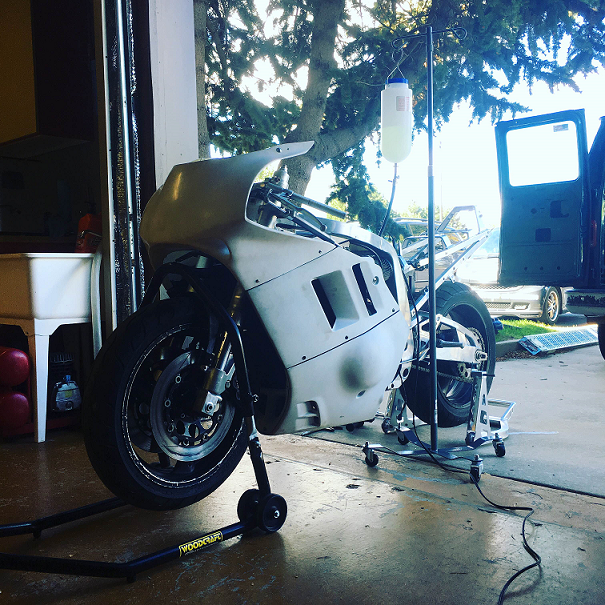How to Use a Test Bottle (I.E. Auxiliary Fuel Tank) When Working on Your Motorcycle

Lets talk about what’s going on in this pic.
For one, we have one of the coolest bikes ever made – a 1989 Suzuki “Slingshot” GSXR750 – supported on stands because it doesn’t have a kickstand. It doesn’t have a kickstand because we’re building it for the track, not the street. And track bikes don’t have kickstands. The reason is kickstands are heavy (LOL, jk), and a kickstand is just another part to flail around and catch the ground when the bike hits the deck – which it will. Because that’s just what happens to sportbikes at race tracks.
You might also notice the bottle of clearish liquid hanging from an IV stand. That’s our “test bottle,” i.e. auxiliary fuel tank. Now why might you need an auxiliary fuel tank? Let’s say you need to do some work on the bike that A) requires the bike to be running as you perform the work and B) the stuff you need to work on isn’t easy to get to with the fuel tank installed. Seems like a pretty major sticking point right? The bike has to be running for you to do what you need to do, but you can’t have the fuel tank installed on the bike to do what you need to do. You’re going to need a way to fuel the bike without the fuel tank. Enter the test bottle. Problem solved!
What sort of work can you do with a test bottle?
The most common job that requires a test bottle is syncing your carbs. Sure, you can sync them “on the bench” with feeler gauges or just by “eyeballing it,” but it’s a hell of a lot more fun (and accurate, natch) if you hook the bike up to a sync gauge and a test bottle. The test bottle feeds the carburetors while giving you plenty of access to the adjustment screws down there between the carbs.
You can snag a test bottle from Amazon.com, oddly enough. The same goes for the IV stand.
Until next time, thanks for reading! If you have a bike that needs work, hit us up at (719) 565-9295.